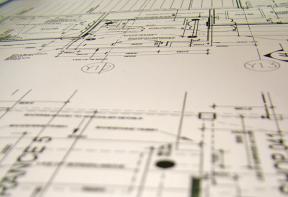Exceed the building code
Building codes are for safety, not comfort or aesthetics. Take your reno to a higher level by exceeding the code
A few years ago, I helped my brother-in-law build his parents’ new home in Huntsville, Ont. We left the heavy construction to the contracting crew, but before the drywall was installed, we ran speaker wire from a hub in the living room through the entire house. Even though his parents didn’t own a big stereo, they knew they would one day, and they didn’t want a web of wires running across floors, walls and ceilings. It was a minor detail, but not one that the contractor had recommended, mainly because homebuilders and renovators are strictly concerned with the building code, not creature comforts or future plans.
The building code has one mandate: safety. It ensures that all builders-whether they are constructing a new home or working on renovations-adhere to standards for framing, foundation, electrical, plumbing and fire protection. Canada has one national building code, which most provinces modify and turn into provincial codes. Electricity, fire and plumbing have separate codes, but, in every case, safety, not comfort or aesthetics, is the lone driver. “You could build an uncomfortable, butt-ugly house with squeaky floors and wonky drywall, and still meet code,” says Rob Koci, a former contractor and current editor of Canadian Contractor, a homebuilding industry magazine. “When it comes to warmth and safety, 65 per cent of builders stick to the code and 35 per cent build above the requirements, if the customer is willing to pay the extra money.”
Of course, running speaker wire through the walls before installing the drywall was a minor upgrade. Changes, such as energy-efficient windows and doors, extra-strong floors and roughed-in plumbing in the basement, all add to the construction costs, but the result is a more efficient and durable home with a higher resale value. There are a lot of small upgrades beyond the building code that you should consider when you’re renovating or building a new home.
Cracking the code
The first step in building beyond code is to forget about the National Building Code book. Bill Crawford, a senior technical advisor with Canada Mortgage and Housing Corp., suggests homeowners stick to what they envision in a renovation or new home, and forget about the intricacies of the code. “I remember testifying as an expert witness on the code a few years back,” says Crawford, “and the judge said to me, ‘You know, my chambers are filled with law books, but I’ve never read a book filled with such complexities as the building code.’” So, what should you do? Where can homeowners turn? “Call a building official. It’s their job to explain the code,” advises Crawford.
So if we’re better off forgetting about the code itself, what’s the best approach a homeowner can take before undergoing a project? “I always ask my clients to draw up wish lists that include future renovation plans or specific uses for rooms, whether now or in the future,” says Michael Upshall, owner of Probuilt by Michael Upshall, a design and building firm in Toronto. “Let’s say you hire me to build a backroom addition. If I know your next reno, maybe five years down the road, will include adding a second storey, then I would suggest beefing up your furnace, ductwork, electrical wiring and plumbing while we have the walls and floors ripped apart. The idea is not to redo work that I renovated the first time I was here.”
Jump to a section
- Page 1 : Understanding the building code
- Page 2 : Exceeding the code where necessary
- Page 3 : Small changes to consider
To leave a comment, please log in












No comments